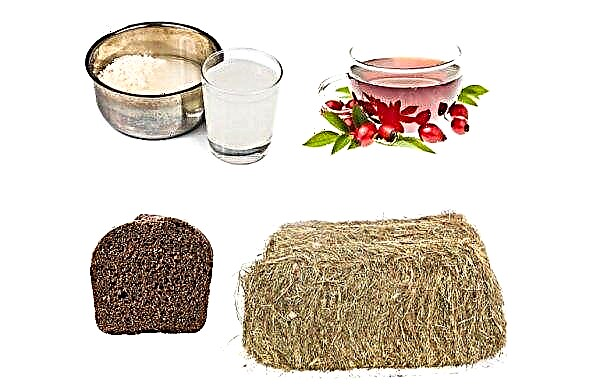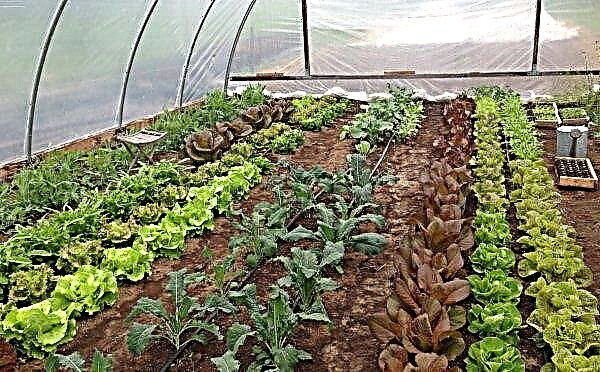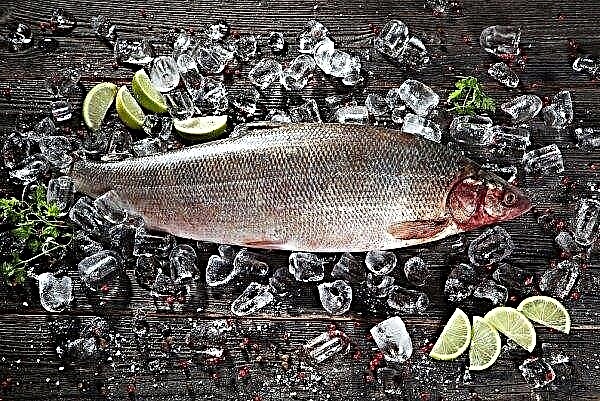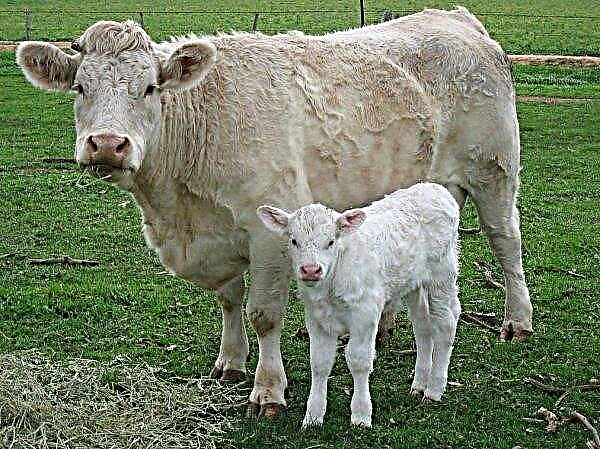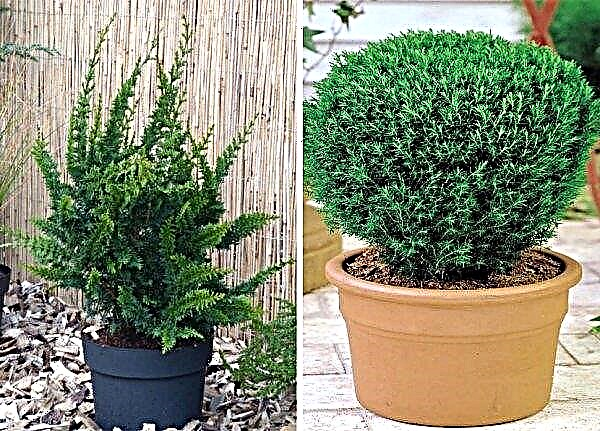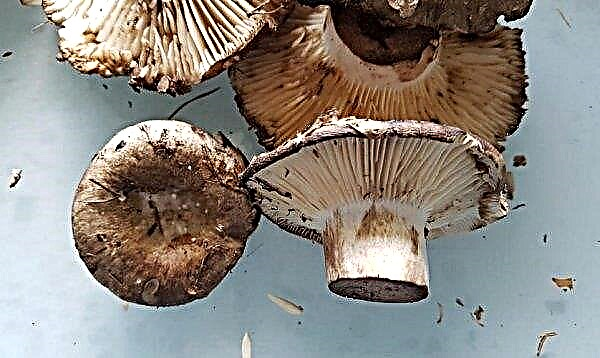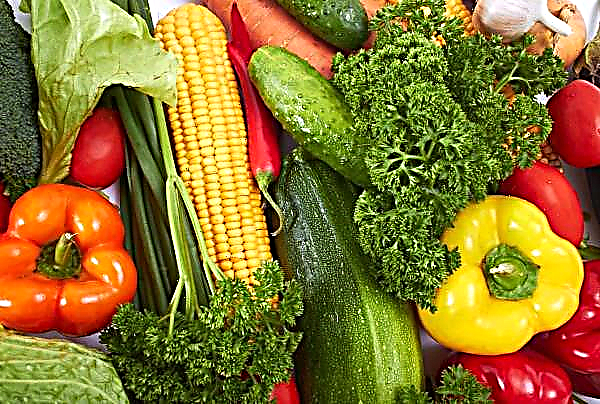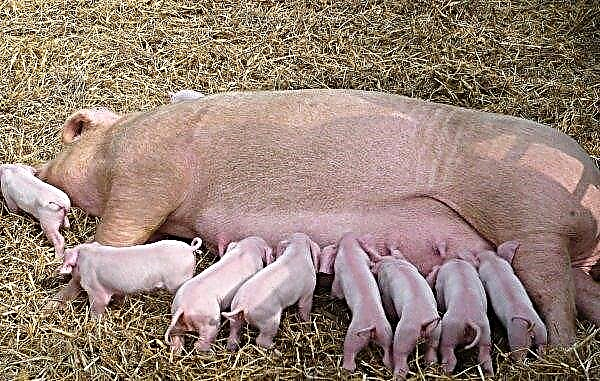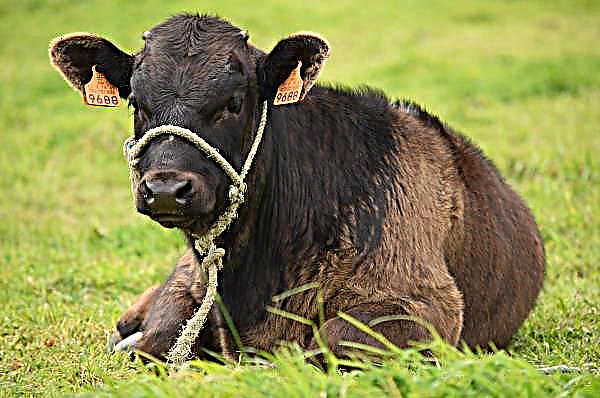Pickled, pickled, salted cabbage - all of these dishes are familiar and familiar to us. There is another old Russian dish - gray sauerkraut or kroshevo. What is it and how to cook, in detail below in the article.
What is gray cabbage
After the cabbage is formed, the marginal leaves of green color remain. It also happens that for some reason (weather or care mistakes) the whole vegetable consists of separately opened green leaves. Usually they, except in a compost pit or livestock feed, do not go anywhere.
But in ancient times, prosperous people used to eat white vegetables, and poor peasants and lackeys used hard green leaves.
Did you know? The hatred of everything German during World War II was so strong that in the USA, for example, the sale of sauerkraut known as the national German dish fell to zero. Resourceful sellers, in order to save their own incomes, renamed the dish “shukrut” into “cabbage of freedom”.
Due to the stiffness, this foliage had to be cooked for a long time, while it was very finely chopped for pickling, so it was called Kroshevo. After the fermentation process, crumbly acquired a gray hue, which gave the dish the name “gray”.
Selection and preparation of ingredients
For harvesting for the winter, elastic leaves are selected, without damage and suspicious spots. They must be washed. You can salt or ferment for convenience in a high and wide enameled pan, and then transfer the product to glass containers.
Before you ferment the vegetable, you need to prepare all the components and utensils. Enameled containers must be intact, if enamel is broken off somewhere, the product may react with the metal. It is advisable to sterilize cans and capron lids so that product storage is long.
Did you know? In Korea, cabbage is also fermented, not only white cabbage, but Beijing cabbage. The dish is called kimchi.
Recipes for harvesting gray cabbage for the winter
Today, most housewives, in an apartment, prefer to store fermentation in 3-liter jars. Therefore, the recipes discussed below will be designed specifically for this volume.
Pickled gray cabbage

1 can of 3 l1 hour 30 minutes
Nutritional value per 100 g:
- Wash the heads out of dust and dirt, shake off water.
- Cut the stump, take the head out into leaves.
- Stacked leaves, cut lengthwise, parallel to the central vein, in strips about 2 cm wide.
- After that, chop across the sheet with thin strips up to 0.5 cm wide.
- Wash and peel the carrots, grate.
- Lay the ingredients in layers: cabbage, carrots, salt. A lot of salt is not needed, each layer is sprinkled with a small pinch.
- After that, all layers are thoroughly crushed by the hands so that the vegetables start their own juice.
- As soon as the vegetables have started juice, they need to be well tamped, covered with a few cabbage leaves along the edge and put oppression.
- The pot with the products put in a warm place for the fermentation of juice.
- After 7 days, foam appears, oppression must be removed.
- Several holes need to be made on the surface of the rammed crochet in order to release carbon dioxide accumulated as a result of fermentation.
- After that, set the yoke back and leave the fermentation for another 3 days. At the end of time, you need to once again remove carbon dioxide, put under oppression for 30-50 minutes.
- The finished snack is transferred to a jar, closed with a nylon cover, stored in a cool place.
Video recipe
Important! At home, as a yoke, you can use a 3-liter jar filled with water, mounted on a flat plate.
Sourdough on cabbage soup

1 can of 3 l1 hour 15 minutes
pepper (allspice)
3 peas
Nutritional value per 100 g:
- First prepare the brine. Boil the water, add all the spices and leave to cool.
- During this time, wash and peel vegetables.
- Cabbage leaves are finely chopped manually or using household appliances.
- Rub carrots on a coarse grater.
- A handful of rye flour is thrown into the washed jar at the bottom, vegetables are laid in layers, without crushing them.
- Pour with cooled brine, put the jar in heat. During fermentation, the juice will splash out through the top of the jar, so you need to put it on a plate.
- After 3 days, the product is transferred to a cool place, and after a week you can cook cabbage soup.

Stock storage
The best option for storing pickled product for the winter is a wooden barrel. In the cellar or basement in the temperature range of -1 ... + 4 ° C, the shelf life of the workpiece will be 7–9 months. Under the same conditions, the vegetable should be stored in glass for 2 weeks. In an apartment, the product is stored in a glass jar on a cold balcony or in the refrigerator. An appetizer will be pleasantly crunchy if it is completely covered with juice during storage.
Fans of old recipes of Russian cuisine will appreciate the unusual taste of snacks and dishes from it.Important! Cabbage soup from gray cabbage is not cooked, but languished over low heat, as in old times in a Russian stove.

